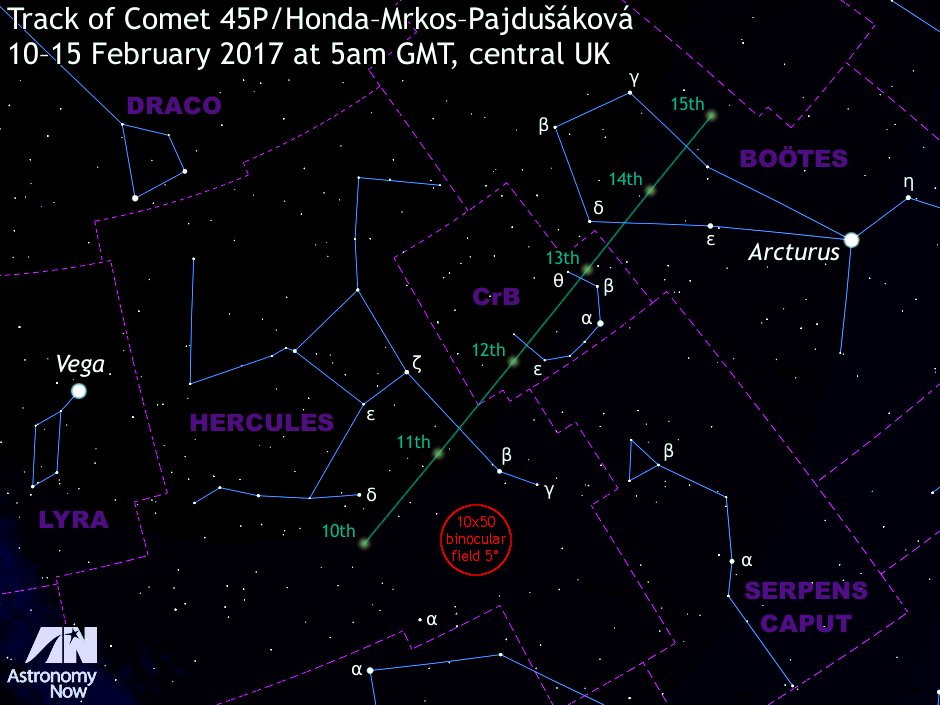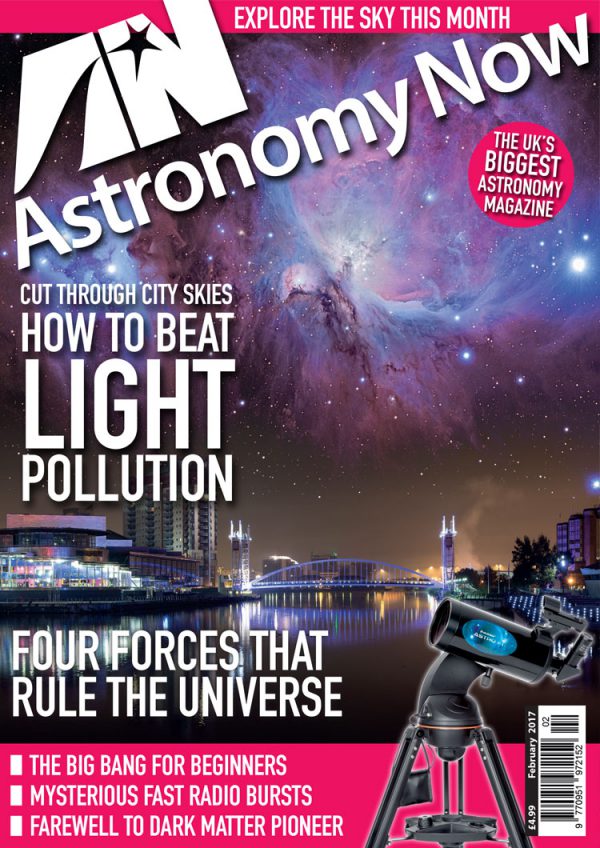
Discovered by Minoru Honda on 3 December 1948 and named after Honda, Antonín Mrkos and Ľudmila Pajdušáková, Comet 45P has an orbital period of 5¼ years. It was closest to the Sun (perihelion) on the last day of 2016. The comet passes just 0.08318 astronomical units (7.73 million miles, or ~32 lunar distances) from Earth on the morning of 11 February. Comet 45P can get closer to us; it came within 0.06 AU (~23 lunar distances) of Earth on 15 August 2011.
Although Comet 45P seems to have lost its tail after perihelion, it still exhibits a beautiful green coma in photographs owing to diatomic carbon (C2) molecules fluorescing in the sunlight. It’s currently some 70 degrees from the Sun in the constellation of Hercules at around magnitude +7, but it’s likely to fade fast once it has past closest approach.
The view from the British Isles
Observers in the UK will get their best views of 45P around 5am GMT when the comet lies 40 degrees or more above the east-southeast horizon before the onset of astronomical twilight. However, the almost full Moon low in the west will make observations a little more challenging. (Incidentally, the slight dimming of the Moon’s upper limb at the maximum of the penumbral lunar eclipse around 12:30am GMT on Saturday 11 February will not improve your views of Comet 45P that will only be 10 degrees above the east-northeast horizon at the time.)
Comet 45P’s coma is diffuse, so expect a dim, roughly spherical cloud somewhat larger than the full Moon. Use the lowest magnification your telescope is capable of — ideally, with a filter passing the OIII and C2 Swan bands for optimal contrast. Large binoculars will give good views too.
The view from East Coast North America
The comet makes its closest approach to Earth at 08:20 UT on 11 February which is in daylight for the UK. For observers on the west coast of North America, however, it will still be dark. As seen from Boston, Massachusetts, 45P’s closest approach occurs at 3:20am EST when the comet lies 43 degrees high in the east.
At its closest, Comet 45P/Honda–Mrkos–Pajdušáková is motoring by background stars at a rate of slightly more than 23 arcseconds per minute of time. This means that the nucleus of Comet 45P moves roughly the apparent diameter of Jupiter every two minutes or 9 degrees per day. Observe the comet close to a faint field star in your telescope and the motion should be noticeable. Click here for a greyscale finder chart to print and use outside.
Inside the magazine
For a comprehensive guide to observing all that is happening in the coming month’s sky, tailored to Western Europe and North America, obtain a copy of the February 2017 edition of Astronomy Now.
Never miss an issue by subscribing to the UK’s biggest astronomy magazine. Also available for iPad/iPhone and Android devices.




